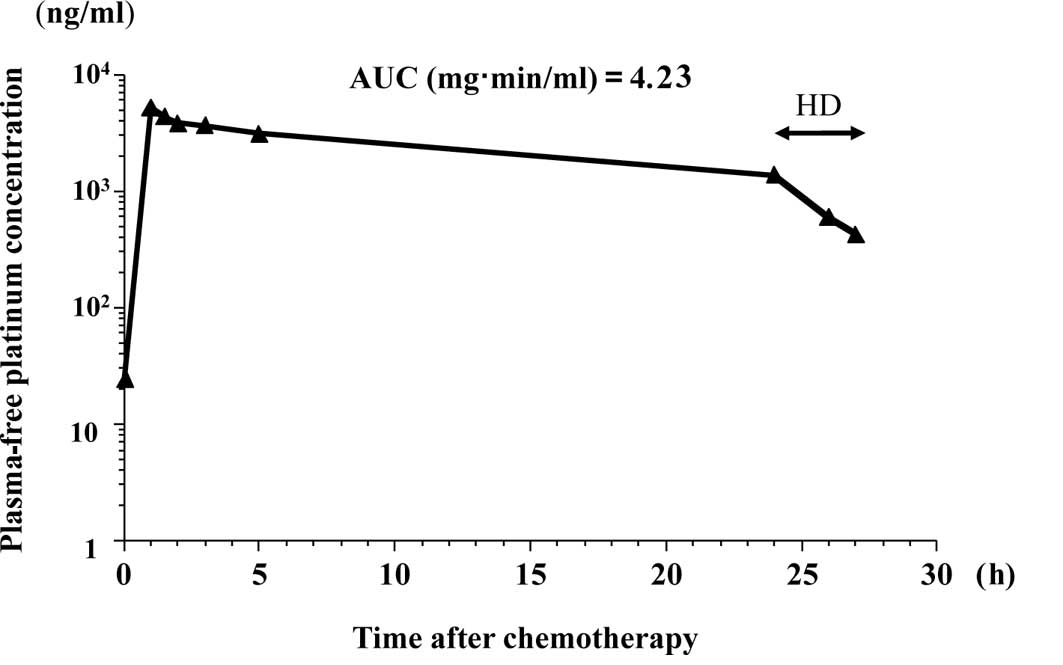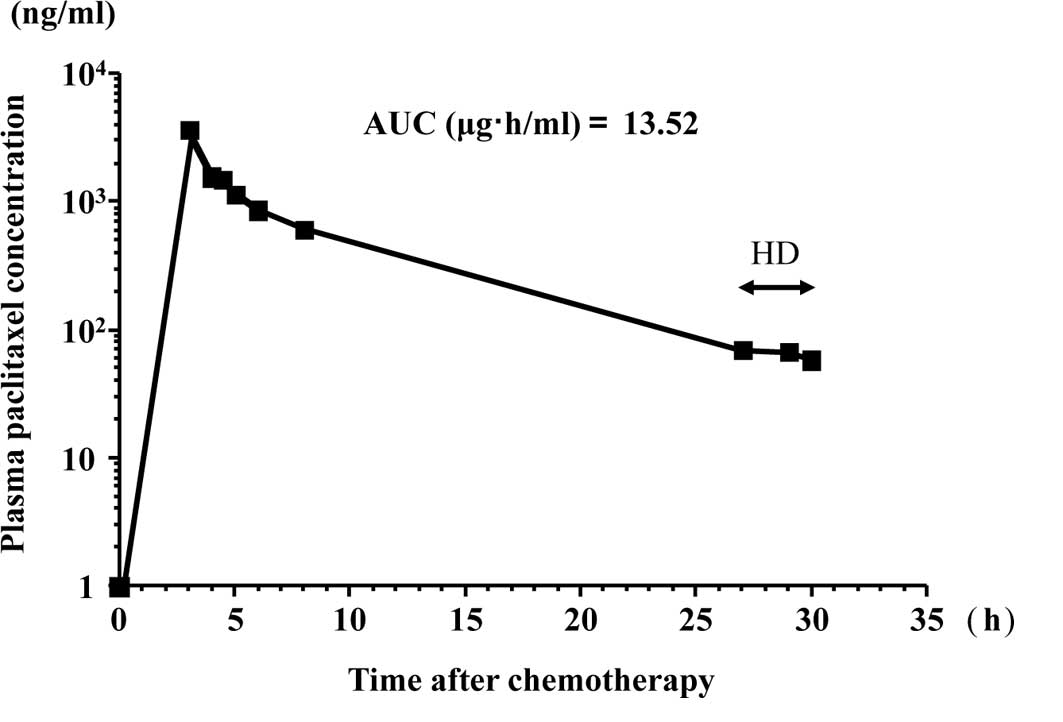Pharmacokinetics of combination chemotherapy with paclitaxel and carboplatin in a patient with advanced epithelial ovarian cancer undergoing hemodialysis
- Authors:
- Published online on: May 1, 2010 https://doi.org/10.3892/ol_00000090
- Pages: 511-513
Metrics:
Total
Views: 0 (Spandidos Publications: | PMC Statistics:
)
Total PDF Downloads: 0 (Spandidos Publications: | PMC Statistics:
)
Abstract
Few reports delineate the pharmacokinetics of combination chemotherapy with paclitaxel and carboplatin in hemodialysis (HD) patients with epithelial ovarian cancer. However, the optimal carboplatin dose and the timing of HD have yet to be elucidated. We presented a case of an advanced-stage epithelial ovarian cancer patient with chronic renal failure requiring HD. After 4 courses of combination chemotherapy consisting of paclitaxel and carboplatin, a partial response was obtained; therefore, she underwent interval debulking surgery. Paclitaxel was administered for 3 h at a dose of 150 mg/m2, and carboplatin was administered for 1 h at a dose of 4-7 area under the concentration/time curve (AUC), which was calculated by the Calvert formula. HD was initiated 24 h after the start of administration of carboplatin and performed for a period of 3 h. Pharmacokinetic studies showed that the AUCs of free platinum and paclitaxel were 3.48-5.55 mg·min/ml and 13.5 µg·h/ml, respectively. Combination chemotherapy consisting of paclitaxel and carboplatin is a feasible approach to improving the treatment outcome of epithelial ovarian cancer patients with chronic renal failure requiring HD. The measurement of free platinum is useful in determining the optimal dose of carboplatin in order to obtain an adequate AUC. Determining the dose of carboplatin according to the Calvert formula and initiating HD after 24 h would ensure a favorable therapeutic effect with limited side effects.












